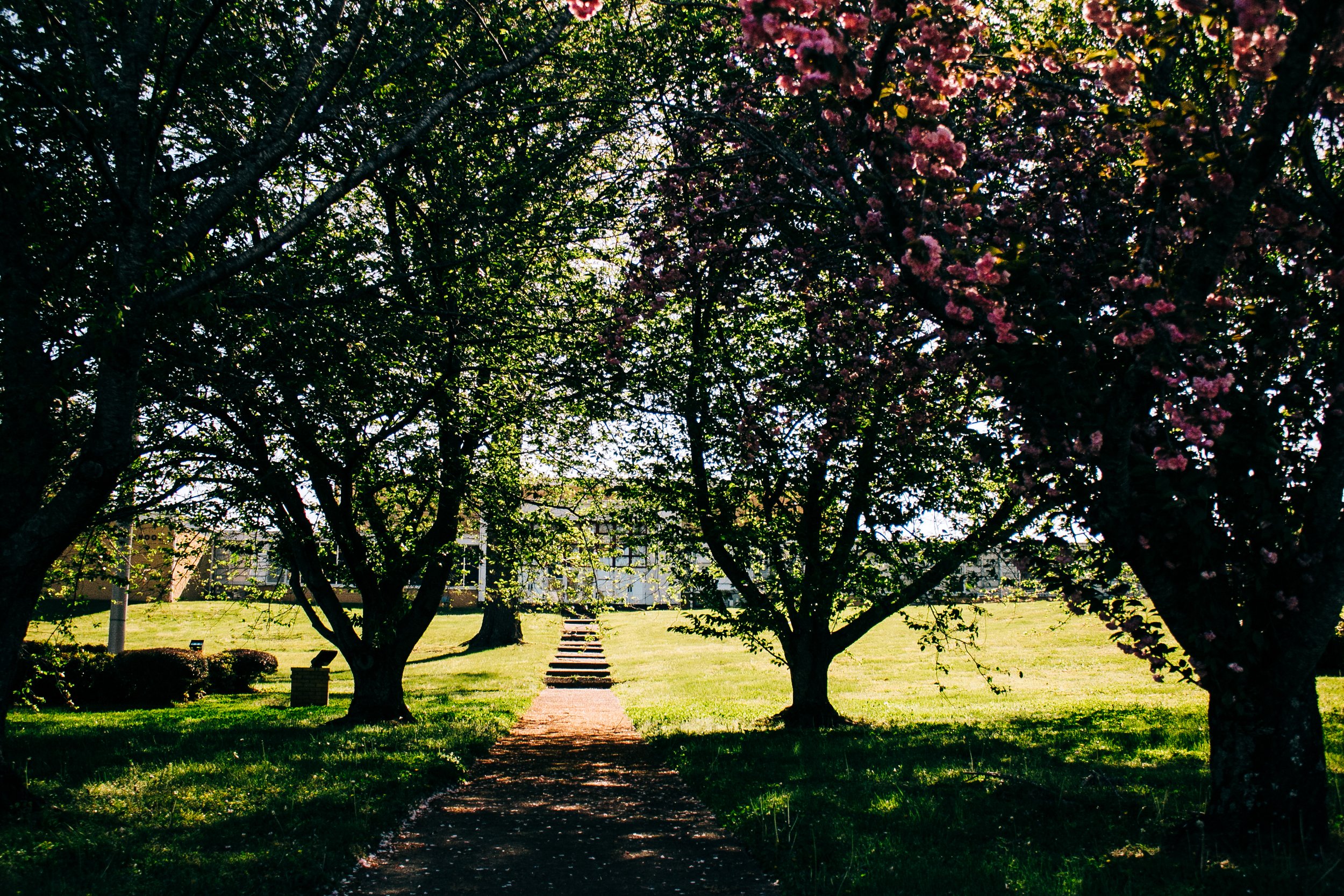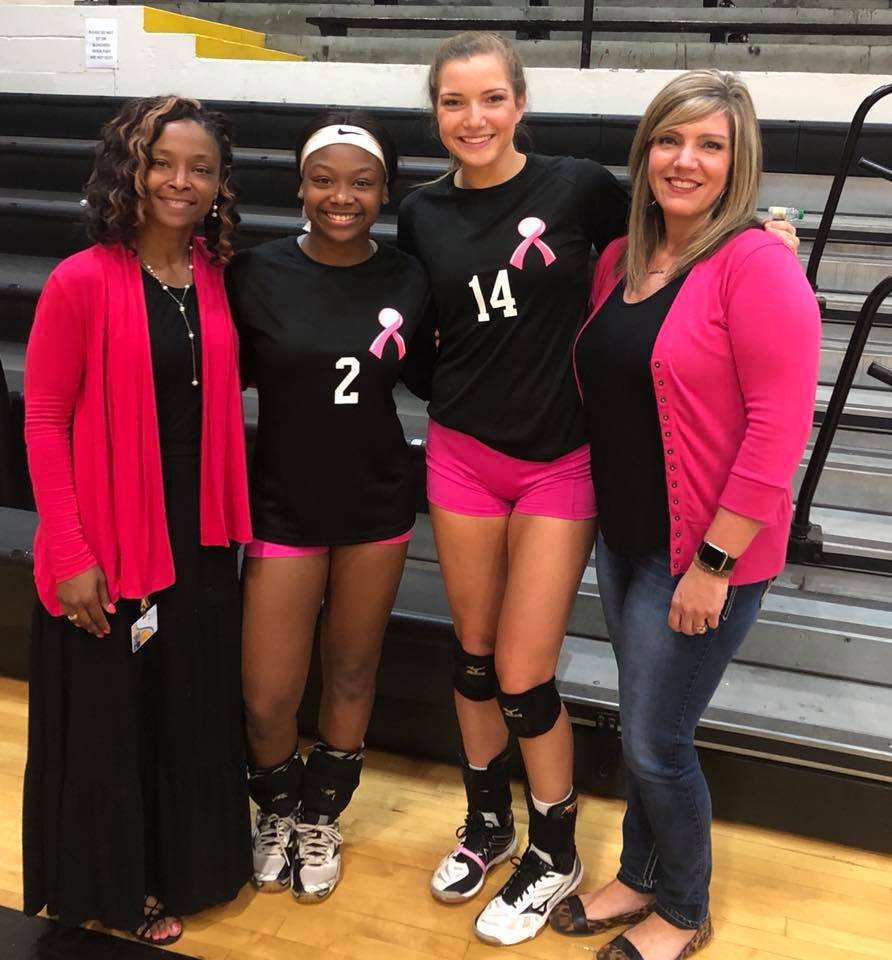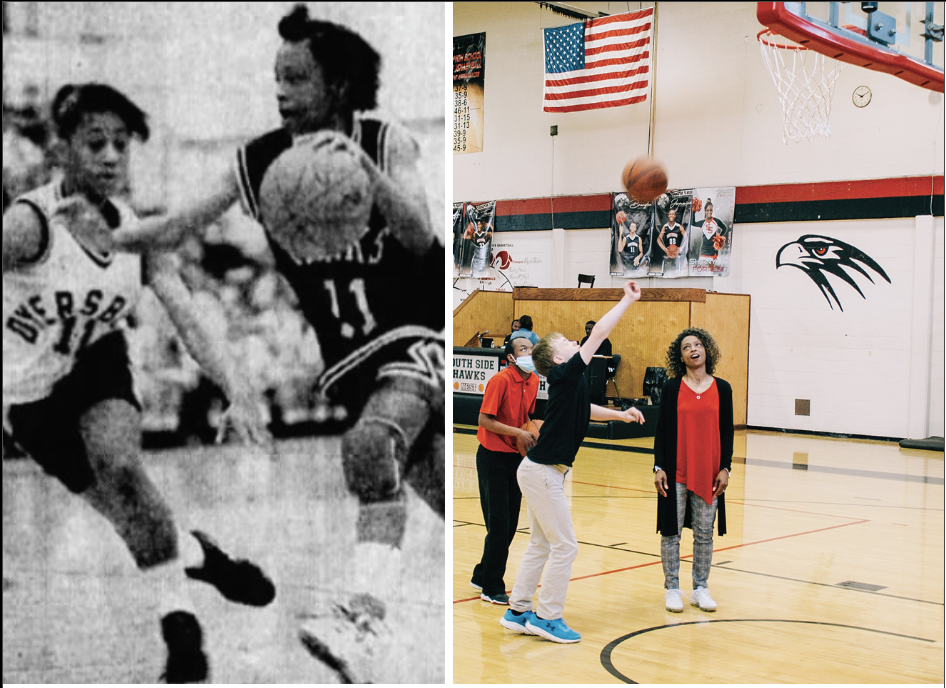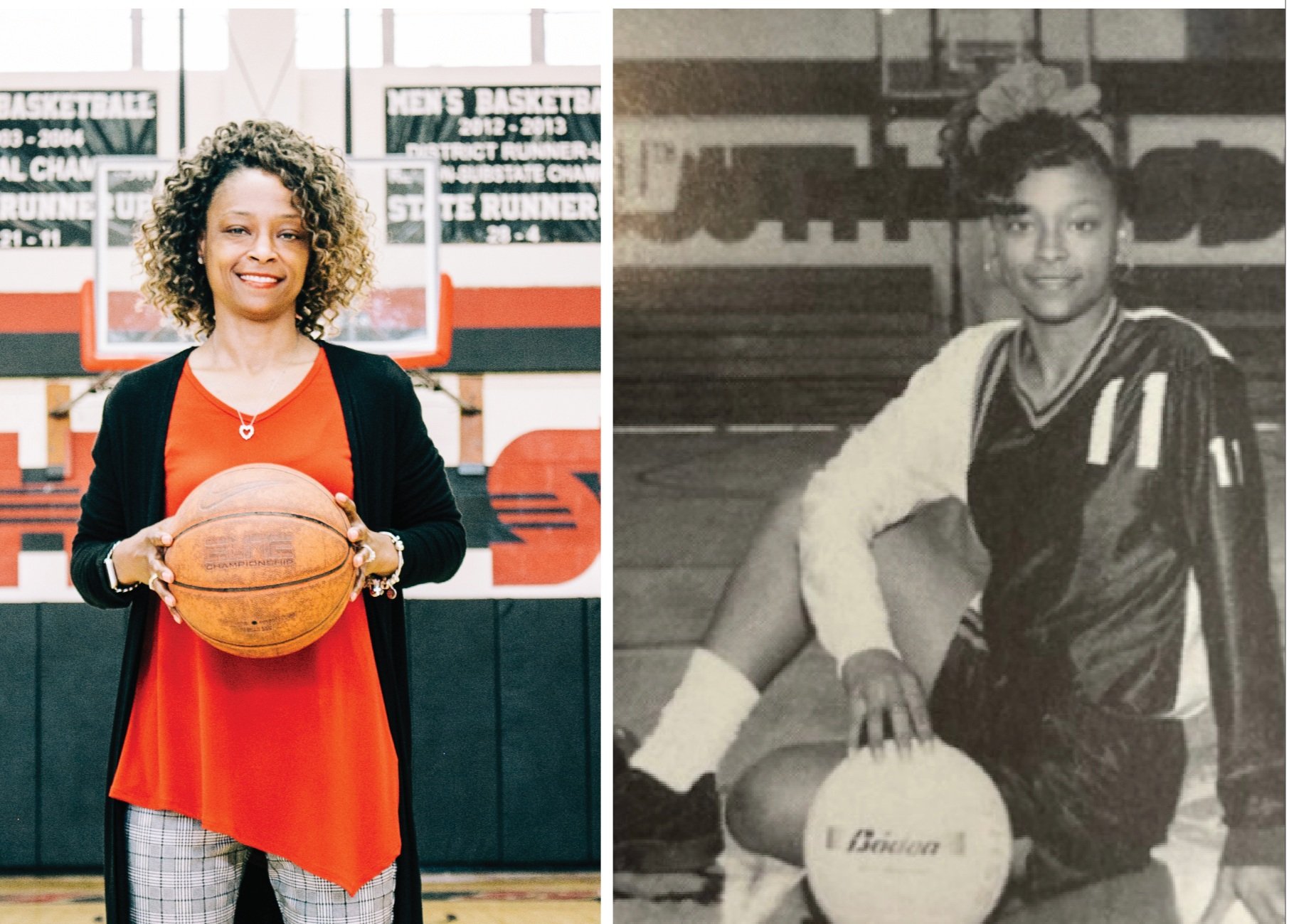A West High, South Side Story
BY GREG D. HAMMOND
Photos of Casshawndra Sain by Courtney Searcy
Featured in Vol 7, Issue 1: Jackson Grown
It didn’t make sense to the kids in the room.
Consolidating Jackson City Schools and Madison County Schools had been a conversation in the Hub City since at least 1970, but social media and the 24-hour news cycle didn’t exist in the spring of 1992. That’s when Casshawndra Gillispie, a sophomore at the time, sat with other athletes in the West High School cafeteria and learned the school would be closing in just a few months. She and her classmates would have to continue their education and athletic careers at South Side High School.
"We had completed our basketball season,” Gillispie said. “We made it to the state tournament and lost in the semifinals to Gleason. Coach Greer, who was our basketball coach, told us that the school was closing down and that we would have to go to South Side. So that was pretty much how we were told about consolidation.”
Thirty years have passed, and Casshawndra Gillispie is now Casshawndra Sain — a married mother of five who is athletic director and assistant principal at South Side. As the Jackson-Madison County School System celebrates three decades as a singular school district, many of the students who first experienced the ramifications of consolidation are reflecting on the varied outcomes the merger had on their lives and the community.
“You have to understand the culture and what came along with being a West High Tiger,” Sain said. “My parents graduated from West High. All of my family and everyone I pretty much grew up with were associated with West High and they took pride in it.”
While heartbreaking in the moment, closing a school is not entirely a unique occurrence; Beech Bluff, JB Young, and East High all experienced similar fates. However, the history behind the landmark consolidation of Jackson and Madison County schools is the stuff of history books and documentaries. This particular unification provides a quintessential snapshot of an American community adjusting to the impact of the Civil Rights movement. Merging the two school districts through consolidation allowed local leaders to have some influence over achieving the racial balance demanded by federal courts in the decades following a 1963 desegregation lawsuit.
According to a 1976 Jackson Sun news report, a court consultant recommended local leaders study the consolidation of Jackson and Madison schools as a solution to desegregation.
West High School was the legacy institution of Golden High School, the first high school in Madison County for Black students. In fact, Casshawndra lived closer to South Side than West High, but long-standing family ties and tradition made the trek to Denmark a rite of passage. At the end of a transitional period that included a provisional consolidated school board from 1990-1992, West High was scheduled to close. Zone line changes in September of 1992 signaled the final chapter of separate school systems. West High became West Middle School, and South Side became Casshawndra’s new home, along with hundreds of other incoming transfers.
“Not that we knew much about South Side or looked at South Side negatively; it was like ‘oh my God, what is happening? What is being taken away from us?’ There was a lot of silence, a lot of tears, a lot of anger and frustration, and no one really had the answers or provided us with additional support,” Sain said. “It was just like ‘at the end of this year, y'all are done here and you're going to move on.’”
“There was a lot of silence, a lot of tears, a lot of anger and frustration, and no one really had the answers or provided us with additional support,” Sain said. “It was just like ‘at the end of this year, y'all are done here and you're going to move on.’”
She didn’t waste any time moving on. With a love for competition in her heart and a “chip” on her shoulder, she tried out for volleyball at South Side, the only West High student to try out. Mary Stewart was a rising senior on the Lady Hawks volleyball team that year.
“I remember some of my friends were being sent to other schools as well,” Stewart said. “We were being split and that was very sad. I remember as an athlete in all sports — volleyball, softball, and basketball — it was sad to lose the ones we had been playing ball with since junior high school. So it goes back further than just the two years we were together in high school. Most of the Beech Bluff students had to finish their senior year at JCM.”
In addition to adjusting to the larger student enrollment created by consolidation, Stewart and her classmates had to adjust to new buildings and a larger campus as South Side’s junior high and high school campuses were combined to form one large campus. Additionally, vocational and fine arts buildings were constructed at South Side and North Side, a direct result of consolidation.
“We go from having a junior high and nothing between it and the high school, to now going back and seeing this large building and going from far east to far west in ten minutes,” Stewart said. “The campus became spread out. That was the biggest adjustment.”
Consolidation provided several challenges, but it didn’t take long for students like Casshawndra Sain to realize the benefits which came with change.
“There were things that we didn’t know we didn’t have. When you talk about academics or extracurricular activities, I think we were lacking at West,” Sain said. “Not that we didn’t have good teachers and things like that, but when you think about curriculum and resources.”
Despite being recruited for basketball by at least 10 schools since her sophomore year, not only had Sain never taken the ACT — she had never even had a conversation about it.
“Not being college prepared, or even really knowing what to prepare for, we were lagging behind,” Sain said. “I say that in no offense to the educators or administrators who were at West, but at South Side my eyes were opened to a lot of things that I just did not consider or have conversations about when I was at West High. We did not have the facilities that we needed. We did not have the equipment, the uniforms for sports, but also academically — classroom sizes, updated textbooks and just things like that. No electronic devices or anything to that effect. So we were quite behind.”
Extracurricular activities and athletics provided many students with opportunities to forge relationships and overcome conflicts brought on by the large, new environment consolidation created on high school campuses.
“Kids from Denmark were coming to South Side, but there were also a lot of East Jackson kids coming to South Side that year. It was not a black or white thing,” Sain said. “It was trying to get everyone together without any tension. And there was some tension. Everyone was fighting for their place to prove they belonged. Sports really helped smooth that transition over. The way that we all integrated and treated one another, it was a domino effect. Because of sports, we were already connected. We could influence our friends or relatives. We already had a bond before school started.”
“The way that we all integrated and treated one another, it was a domino effect. Because of sports, we were already connected. we could influence our friends or relatives. We already had a bond before school started.”
It was a productive experience for Sain and Stewart, now Mary Stewart Taylor, a married mother of three. The two have been friends ever since volleyball season during that first semester of consolidation. While the Lady Hawks made it to substate in volleyball that year, it was basketball season that made them sisters.
“Mary was one of the toughest girls we met when we got there. She may not have been as athletic, but if you came down in the post, you might get a hard foul or an elbow,” Sain said. “She laughed and joked a lot. She made you feel like you were a part of things. She had leadership and she was tough. She was no pushover. She had what it took to get through some of the situations on and off the court.”
Stewart admits she may have been a little “mean” on the court.
“I had to make up for not having the size,” she said. “I was going against Marquetta Hunt from Huntington. Come on, people. I had to hold my own.”
That first basketball season ended with the Lady Hawks losing to Huntingdon in the region tournament.
“The number of games we lost my junior year are more than I have ever lost in my entire life, even going back to junior high,” Sain said. “They were good, but had we done something different with the talent we had, I don’t think it would have been close.”
Stewart graduated in May 1993 and, a few months later, Sain started her senior year at South Side.
Casshawndra’s twin sister, Deshawndra, joined her on the volleyball team. Five of their former West High teammates also joined them. In basketball, the number of former West High players had risen to eight.
There was another West addition to the Lady Hawks that season. Former West Junior High coach T. Willie Tyson, who coached South Side’s boys the previous year, was now the coach of both South Side teams.
With Tyson’s guidance, the Lady Hawks advanced to the Class AAA state tournament for the first time since the late 1960s and wouldn’t return again until 2017. Making state may have been the highlight of Sain’s athletic experience at South Side, but the academic impact consolidation had on her life may be the biggest highlight.
And while Sain hated losing West High, which still hurts to some degree, she understands the purpose behind it.
“I think equal access to opportunities and options were there for all of us,” Sain said. “There were so many teachers who supported us and taught us things that we just would not have thought about. It became a personal responsibility to succeed and take advantage of the opportunities like signing with Union and just so many things that so many people of my color didn't think they had at that time. We looked at each other everyday and saw each in the way that Dr. Martin Luther King talked about. Love came out of it.”
South Side English teacher Brad Gaskins contributed to this article.
GREG D. HAMMOND serves the Jackson-Madison County School System as Chief of Public Information. Prior to joining district leadership, Greg taught Broadcasting at South Side High School, his alma mater, for 12 years. He has worked in television, radio, and newspaper since graduating from South Side and the University of Tennessee at Martin. Greg is married to former Union University softball standout Megan Quarry. Their two children are students in the public school system.





















